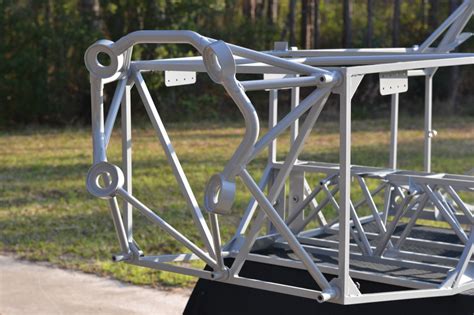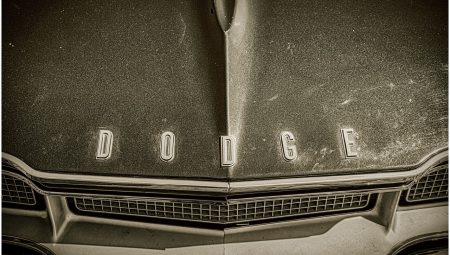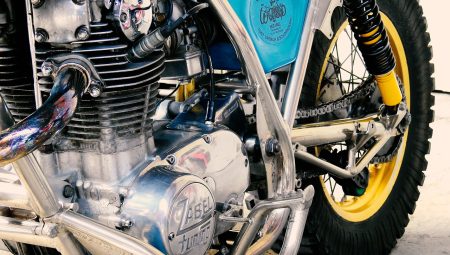Explore the advantages, installation, and maintenance of Dynafocal engine mounts, comparing them with conical mounts for optimal performance and reliability.When it comes to aircraft performance and safety, the choice of engine mount plays a crucial role. Among the various types available, dynafocal engine mounts have gained significant attention for their unique design and numerous advantages. This blog post delves into the intricacies of dynafocal engine mounts, illuminating their functionality and the benefits they bring to aviation. We will compare dynafocal mounts with the traditional conical engine mounts, provide a step-by-step installation guide, and highlight common issues that may arise, alongside maintenance tips to ensure longevity. Whether you’re an aircraft owner, mechanic, or aviation enthusiast, this comprehensive overview will equip you with the knowledge to make informed decisions about dynafocal engine mounts and enhance your flying experience.
Understanding Dynafocal Engine Mounts
The term Dynafocal Engine Mounts refers to a specific design of engine mounts that feature a unique dual-plane configuration, which significantly enhances the structural integrity and performance of the engine installation by reducing vibration and ensuring a stable connection between the engine and the aircraft structure.
Unlike traditional mounts, which often rely solely on a single point of contact, Dynafocal Mounts utilize a broader interface that distributes loads more evenly and allows for better alignment of the engine during operation, thereby improving both safety and operational efficiency as well as prolonging the lifespan of vital engine components.
Furthermore, the geometry of the Dynafocal Engine Mount not only seeks to absorb and mitigate adverse vibrations but also provides inherent advantages in terms of weight savings, facilitate easier maintenance accessibility, and offers compatibility with a range of piston and turbine engin
Comparing Dynafocal vs Conical Engine Mounts
When it comes to aircraft engine mounts, two prevalent designs are the Dynafocal and Conical engine mounts, both of which serve the critical function of securely attaching the engine to the airframe while minimizing vibrations and enhancing performance; however, they differ significantly in their design and application, which can influence the overall performance and maintenance requirements of the aircraft.
The Dynafocal engine mount features a unique two-plane attachment system, which effectively allows the engine to be centered in relation to the airframe’s neutral axis, therefore providing superior vibration isolation compared to the Conical engine mount, which relies on a single attachment point that can sometimes lead to misalignment and increased stress on the engine over time, leading to potential maintenance issues.
In terms of installation and maintenance, the Dynafocal mounts are generally considered easier to install due to their robust design that helps in aligning the engine more accurately without requiring extensive adjustments, whereas the Conical mounts, being simpler in their design, may entail some additional complexities in achieving proper alignment, and these differences can have significant repercussions on performance, durability, and ease of repair and replacement during the aircraft’s lifecycle.
Installation Process of Dynafocal Engine Mounts
Installing Dynafocal engine mounts is a crucial process that requires careful attention to detail and adherence to specific guidelines, as these mounts play a significant role in minimizing vibrations and maintaining engine alignment, ultimately contributing to the overall performance and longevity of the aircraft.
Before embarking on the installation of Dynafocal engine mounts, it is essential to gather the necessary tools and materials, including but not limited to a torque wrench, engine hoist, and the specific mounting hardware appropriate for your aircraft model, and ensuring that you have reviewed the manufacturer’s installation manual thoroughly will help facilitate a smoother process.
During the installation, it is critical to first remove the existing engine mounts if applicable, ensuring that all components are free from damage and securely positioned, and once the old mounts are out, carefully aligning the new Dynafocal engine mounts with the engine and airframe mounting points is imperative to guarantee proper fit and function; finally, torqueing all bolts to the manufacturer’s specifications will secure the mounts, so a final inspection of the entire assembly should be performed to confirm
Benefits of Using Dynafocal Engine Mounts
When it comes to aircraft engineering and maintenance, the importance of utilizing Dynafocal engine mounts cannot be overstated, as these mounts are specifically designed to provide enhanced stability while effectively absorbing vibrations that occur during the operation of the aircraft’s engine, thus significantly improving overall performance and safety.
One of the primary advantages of implementing Dynafocal engine mounts is their ability to reduce the transfer of vibrations and noise to the airframe, which not only enhances passenger comfort but also extends the life of components within the aircraft, resulting in decreased maintenance costs over time and making them a cost-effective solution for aviation enthusiasts and professionals alike.
Moreover, Dynafocal engine mounts provide superior alignment of the engine, ensuring that it is properly positioned and secured within the aircraft structure, thereby minimizing stress on various systems and enhancing overall operational efficiency, which is particularly essential for aircr
Common Issues and Maintenance of Dynafocal Mounts
When it comes to ensuring optimal performance and longevity of aircraft engines, the significance of Dynafocal engine mounts cannot be overstated, as these specialized mounts play a crucial role in stabilizing the engine and minimizing vibrations; however, like any mechanical component, they can encounter certain issues that may require attention to prevent adverse effects on aircraft operation.
One of the prevalent issues associated with Dynafocal mounts is the wear and tear of the rubber bushings, which are designed to absorb vibrations and prevent stress on the airframe; over time, these bushings can degrade due to factors such as excessive vibration, exposure to fuel, and environmental conditions, leading to a reduction in their effectiveness. Regular inspections are therefore essential to ensure that the bushings remain in good condition, and if any signs of cracking or deterioration are noted, replacement should be conducted promptly to maintain the integrity of the mount.
Moreover, maintenance of Dynafocal mounts entails not only periodic checks of the rubber components but also an overall assessment of the alignment and tightness of the mounting bolts, as misalignment or loose fittings can lead to increased stress on the engine and ultimately result in premature failure; hence, it is advised to follow the manufacturer’s guidelines for inspection intervals and maintenance procedures. Furthermore, keeping a meticulous record of any maintenance performed on Dynafocal engine mounts can help in identifying patterns over time that may indicate emerging issues, thus facilitating proactive rather than reactive maintenance strategies.
Frequently Asked Questions
What is a dynafocal engine mount?
A dynafocal engine mount is a type of engine mounting system that uses a flexible design to minimize vibration and stress transmission from the engine to the airframe, enhancing overall performance and durability.
What are the advantages of using a dynafocal engine mount?
The advantages of a dynafocal engine mount include better vibration dampening, reduced wear and tear on the airframe, improved engine alignment, and the ability to handle engine torque loads more effectively.
How does a dynafocal engine mount differ from a conventional mount?
Unlike a conventional engine mount that typically uses fixed points of attachment, a dynafocal mount employs a rubber or elastomeric component that allows for flex, absorbing shocks and vibrations better than traditional mounts.
What materials are commonly used in dynafocal engine mounts?
Dynafocal engine mounts are often made from high-strength materials such as aluminum and rubber or composite materials, which provide the necessary flexibility and durability.
Are dynafocal engine mounts suitable for all aircraft types?
While dynafocal engine mounts are commonly used in light general aviation and some experimental aircraft, their suitability depends on the specific design and performance needs of the aircraft.
How should dynafocal engine mounts be maintained?
Maintenance of dynafocal engine mounts involves regular inspections for signs of wear, degradation, or cracks, and replacing any damaged components to ensure both safety and performance.
What impact can a faulty dynafocal engine mount have on aircraft performance?
A faulty dynafocal engine mount can lead to increased vibrations, misalignment of the engine, poor handling characteristics, and even structural damage to the airframe if not addressed promptly.





